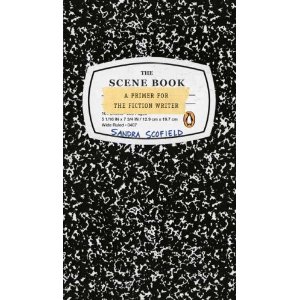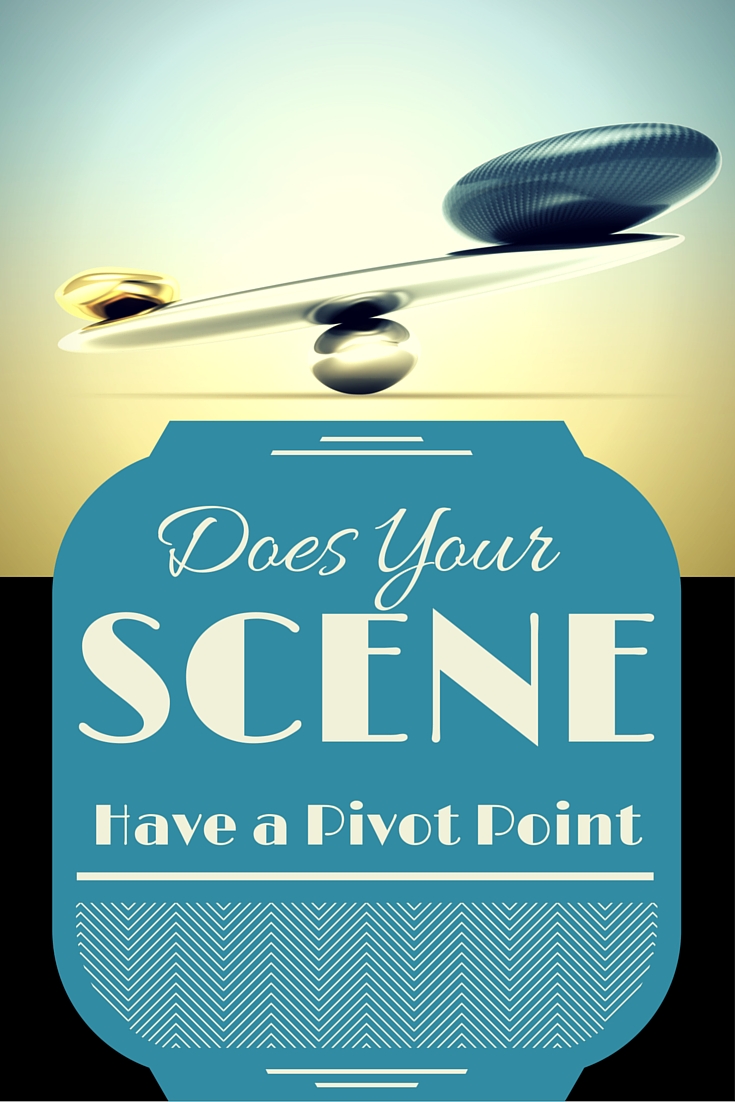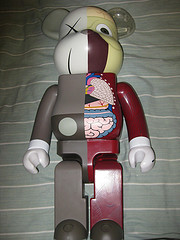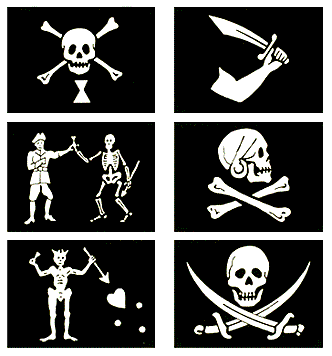new posts in all blogs
Viewing: Blog Posts Tagged with: turning point, Most Recent at Top [Help]
Results 1 - 5 of 5
How to use this Page
You are viewing the most recent posts tagged with the words: turning point in the JacketFlap blog reader. What is a tag? Think of a tag as a keyword or category label. Tags can both help you find posts on JacketFlap.com as well as provide an easy way for you to "remember" and classify posts for later recall. Try adding a tag yourself by clicking "Add a tag" below a post's header. Scroll down through the list of Recent Posts in the left column and click on a post title that sounds interesting. You can view all posts from a specific blog by clicking the Blog name in the right column, or you can click a 'More Posts from this Blog' link in any individual post.
I’m revising my WIP novel one scene at a time and finding places where I need to do lots of work. Specifically, I want scenes that pivot.
A scene is self-contained section of the story. Characters come into a scene with a goal and they either reach their goal or not. The scene should have a beginning, middle and end. And, according to THE SCENE BOOK by Sandra Scofield, your scene also needs a pivot point.

Scofield says that characters go into a scene with a goal, with something they are fighting for. But at some point the story twists, deepens, or changes in a fundamental way.
If you don’t have one, the scene is boring. Think about where the scene’s essence lies: the point at which everything changes. There if Before X and After X. X is the focal point. – Sandra Scofield, p. 54, The Scene Book

It’s a hard concept in some ways to talk about, but you know it when you see it. In this short scene from the movie,”Good Will Hunting,” the focal point, pivot point, hot spot, turning point, or apex is when Will steps in to help his friend. This is a great example because it shows the character in action, doing something that matters.
If you can’t see this video, click here.
By contrast, some scenes in my WIP just sit on the page. For example, I have one scene where the main character meets the romantic interest character. There’s a lot of characterization going on; they are at a coffee shop where she’s a barista and he’s ordering a special coffee drink; there’s some humor. But the scene still felt flat. Until I realized that there’s no real pivot point, no fulcrum for the scene. To change it, he asks a simple question, “Who are you?” That launches her into a humorous, but character-revealing pseudo-tirade, which results in him really paying attention to her and finding that he’s VERY attracted. Before the tirade, he’s not interested; after the tirade; he’s hooked.
To revise your scenes, fill in the blanks:
Before _____________(Pivot Point), my character _______________; AFTER _______________(Pivot Point), my character ____________________.
Find a way to pivot somewhere in each scene–and you’ll hook me as a reader!

I can't remember the year. I remember the sweep of stairs and the white-light room at the Philadelphia Ethical Society, just off Rittenhouse Square. I remember the people—Mike Dunn, of KYW News, Tanya Barrientos, an
Inquirer writer who later forged an amazing communications career, a blonde who raked her stories with lists, James Rahn, the workshop leader, others. And there in that class of journeying writers was Judith Bowles, a woman who had lived an extraordinary life, raised famous children, and had remarkable powers with words. She had lived in Sri Lanka, Tunisia, Wyoming, Manhattan. She remembered her mother. She wrote stories whose quietude I can still hear in my head, though I don't remember the plotting, a typical disorder, since plotting has rarely engaged my heart or my ear.
But Judith Bowles engaged me. Even as the class dissipated and we writers went our own ways and Judith moved with her husband to somewhere near DC. Even then, we continued our friendship. Old-fashioned letters. Christmas cards. And then, this year, Judith's card to me announced the publication of her first book of poems. Her moment now that her girls, and their children, are grown.
This is
The Gatherer, published by Turning Point Books. Which I, grateful, have read this afternoon.
These are poems about earth that is "foggy soft" after a "snapped back" rain, about mason jars "like picture books/wild with color," about Edison's death chair, and about an Uncle Charlie who sizes the young girl up:
... After my horseshow he wanted
to know why I slumped
the minute the judges appeared
and at swim meets why I dove
deep off the side of the pool.
He said that I swallowed up
luck. He'd learned from watching
I didn't want to win. No other grownup
talked to me like that.
(Fisherman)
These are poems about a homemade life and about earrings (and a poem) "restored from shards," and about a "wild blue place"(this is my favorite poem) in which Judith practices the absence of her mother. Look:
... The sky there was wide, sharp,
attentive and as if from that wild
and very blue place
came a soft little gesture
that suited my hand.
It's a rite I still practice dozens
of times every day where my thumb
rubs my forefinger in smooth tiny
circles that say we're each here.
(Wild Blue Place)
Reading
The Gatherer is like having Judith back in the room with me, her steady grip on elusive things. Reading
The Gatherer is a pleasure I urge on every one of you.
Congratulations, Judith Bowles. It was worth the wait.
The other day, my son discovered Maury Povich, and it wasn’t just any topic. This was “whose the baby’s daddy.” I decided to watch with my tween son and use the show to drive home a few cautionary points. What I didn’t expect was a lesson in building tension.
First, they would bring out the young woman. She would tell her story and swear up, down and sideways that the guy they were about to meet was the father and she was going to prove it. THE PROTAGONIST had a GOAL.
Then Povich would interview the “father” who would swear that there was no way the child was his. He became the ANTAGONIST.
This alone would just be a case of he said, she said. But the producers made sure we got RISING TENSION. One guy said the baby didn’t look like him. Another pointed out that she had pulled this before; he had proved the first baby wasn’t his. The ANTAGONIST has a GOAL that goes against the protagonist’s goal.
At last, Povich held the envelope with the DNA test in his hand – the TURNING POINT. Invariably the man in question was not the baby’s father. Why invariably? To keep the TENSION high, and, believe me, with the tears, screaming and name calling, there was plenty of tension.
As writers, you need to manage the tension in your stories as if you were a producer on Maury Povich.
Start with your PROTAGONIST. What is her GOAL? If you are going to use it to create tension, it has to be a big deal. What is at risk if she fails? She doesn’t have to look foolish on national television, but the bigger it is the more tension you will create.
There also has to be someone or something in her way. If you use an ANTAGONIST, vs. nature or time, your antagonist doesn’t have to be evil. His goal just has to be at odds with the goal of your protagonist.
Before the end of the story, you need to INCREASE THE TENSION. The reader could learn something about the protagonist that puts her goal in question. Or another character could surprisingly side with the antagonist. In some way, the protagonist must meet a REVERSAL.
This is where so many of us fall down on the job. We like our characters and don’t want to be the cause of their suffering. We make things too easy. We make things boring while Povich and his producers keep throwing more and more trouble into the mix.
Do this and, like Povich, you will keep your audience on the edge of their seat, shouting, cheering and maybe even booing. The one thing they won’t be doing is putting aside your writing to watch something on TV.
–SueBE
Author Sue Bradford Edwards blogs at One Writer's Journey.

By:
Darcy Pattison,
on 1/27/2010
Blog:
Darcy Pattison's Revision Notes
(
Login to Add to MyJacketFlap)
JacketFlap tags:
beginning,
emotion,
middle,
how to write,
turning point,
pulse,
book,
novel,
plot,
scene,
end,
Add a tag
Anatomy of a Scene
If you dissect a scene, what do you find? Sandra Scofield, in The Scene Book: A Primer for the Fiction Writer lays out a simple, yet insightful discussion of this concept and it’s usefulness to a novelist.
Here are the basics of a scene:
- Event and Emotion: Something happens and it makes the reader feel something. We’ll say it again: novels are made up of external events, not interior thoughts and feelings. Yes, novels are distinguished by their ability to take a reader inside a character’s head and show us their thoughts and feelings. Yet, paradoxically, the scene is the solid framework of events to which the character reacts.

- Function: Hey, why did you write this scene and include it in your novel exactly here? For example:
- Character: character entrance, develop character’s qualities, build relationship, complicate relationship, argument, making up, romance, etc.
- Plot: conflict, twist, surprise
- Technical stuff: foreshadowing
The question is always, do you need this scene, or could you skip it or just summarize it?
- Structure: There should be a beginning, middle (including a turning point, or as Scofield describes it, a focal point), and end.
- Pulse: This is the emotional content of the scene, the underlying emotions, whether expressed explicitly or implied.
I could spend pages explaining each of these, but a demo will work better. Tomorrow, we’ll look at a film clip and see if you can identify each of these in the clip.
Meanwhile, read Scofield. Her explanations are so good, you should get it directly from the master.


By: Erica Olsen,
on 2/2/2008
Blog:
Librarian Avengers
(
Login to Add to MyJacketFlap)
JacketFlap tags:
yahoo,
Second Life,
Linden Lab,
hiring,
IT,
layoff,
tech job,
web developers,
hiring,
layoff,
tech job,
web developers,
work,
employment,
Tech,
Video games,
jobs,
Second Life,
IT,
yahoo,
Linden Lab,
Add a tag
 With the recent news of Yahoo’s potential acquisition by vile Microsoft and its prior layoff of 1000 hardworking geeks, there was a bit of an air of piracy in the office last week.
With the recent news of Yahoo’s potential acquisition by vile Microsoft and its prior layoff of 1000 hardworking geeks, there was a bit of an air of piracy in the office last week.
Linden Lab is going into another round of recruitment, focusing on web developers, QA folk, and other nerdy types. If any web developers out there (you, yes, YOU Joy!) want to work in a more stable, hilarious, and weird environment, you might want to fill out an application to work at Second Life. Free beer, the Love Machine, and a frightening amount of RockBand can all be yours!
Linden seems to be where the socially-developed nerds go to work. There’s a much larger % of women, extroverts, parents, and charmers working at Linden than is considered industry standard. Which means you tend to not find yourself in conversations with dudes who can’t make eye contact with a girl, or folks who get REALLY EMOTIONAL about their code.
It’s good to be a god, too, even if it’s only in-world. You can read more about our wickedcool office culture in the Tao of Linden.







 With the recent news of Yahoo’s
With the recent news of Yahoo’s
The Maury Povich show has never been so highly elevated as this.
Perhaps if they advertised their show as a lesson in story writing, they'd get more reaction in their studio audience? (I think not, sadly.)
This post is proof that a person can take anything--even an inane television show--and spin it in a positive way.
Sue--this post made me laugh out loud. I love it, and everything you said was SO TRUE! :)
Ha! I've never thought of those daytime talk soaps as stories...but I do believe they're scripted that way.
One big difference between books and television, though, is that we don't have the benefit of a live studio audience to manipulate the reader. A lot of the tension doesn't come from the participants' problems, which are often trite by themselves, but the crowd reaction to each revelation. I'm sure they have cue words flashing up over the stage saying, "Boo!" "Cheer!" "Aww...." There's a reason the camera is constantly panning around, zeroing in on exaggerated expressions of shock or anger. Without that audience energy, those shows would be terribly awkward. Imagine the teen mamas and baby daddies in an empty white room screaming at each other, with nothing but the camera between them and the viewers at home. That's closer to the situation we have to deal with: just the words on the page and the reader on the couch.
T.K.,
We may not have the reaction of the audience to manipulate reader emotion but we have other "tricks of the trade." These can include:
*The specific setting
*Various sensory details
*Specifics about the characters' emotional reactions
*Verb choices
*Limiting the space through which the character can move
*Limiting the time she has to solve a problem
These are all ways we can ramp up the tension and script our own stories.
--SueBE